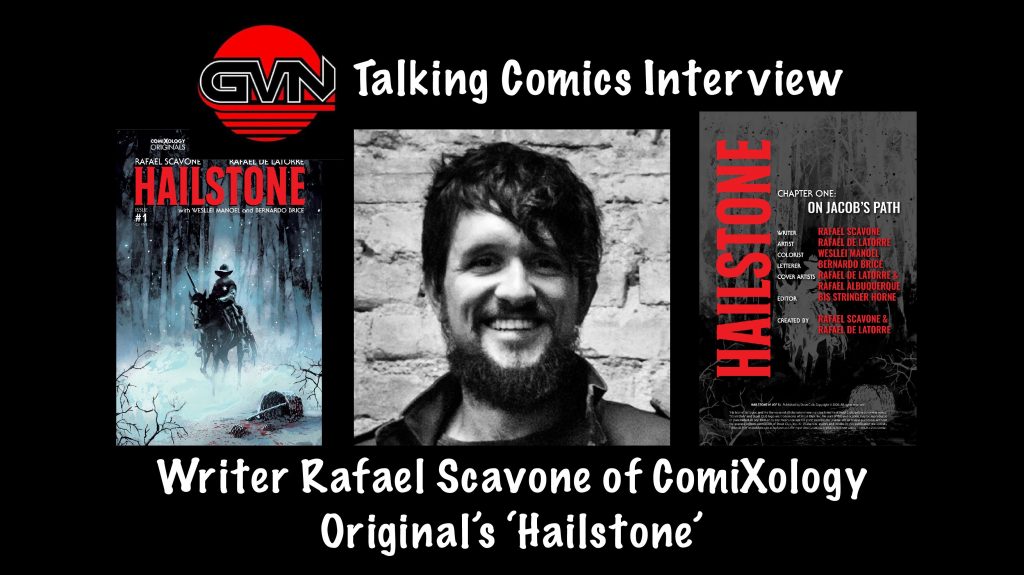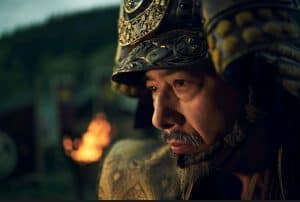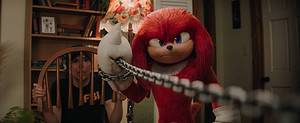I have always been a huge fan of westerns. Mainly John Wayne films but if it’s a western, I’m likely interested. When you mix in horror aspects to the story, I’m definitely hooked. So when ComiXology announced Rafael Scavone’s and Rafael de Latorre’s Hailstone, I was eager to check it out and talk to writer Rafael Scavone about the book. So without further ado, let’s welcome writer Rafael Scavone to GVN’s Talking Comics.
RS: I always loved comics and I used to write and draw fanzines with friends back in my teens. Life goes in unexpected ways, though, and I didn’t really take the idea of making a profession out of it seriously at that time.
I have studied History at university and worked with archeology and then design, for some time. In 2014, I came back to live in the city where I was born, and met up with my good and old friend Rafael Albuquerque again. He encouraged me to pursue that old dream.
I started working at his studio, first editing, then as an art assistant. Then, in 2016, Rafa invited me to co-write a story for the Wonder Woman 75th Anniversary Special. It was magic!
That was my debut as a comics writer, and since then I had the luck to also work with other amazing artists like Sebástian Fiumara in All-Star Batman and Eduardo Medeiros in Funny Creek. And, of course, Rafael de Latorre now in Hailstone.
RS: I’m inspired by a lot of creators not only in comics, but also in literature, music, paintings. In comics as such, I’ll say Alan Moore, Darwyn Cooke, Neil Gaiman, Warren Ellis, Mark Millar, Grant Morrison, Laerte, Carlos Trillo, Frank Miller, Bill Waterson, Jeff Lemire and so many others. But Rafa Albuquerque was my real mentor in this craft. He’s the one who always encouraged me. Who made me realize it was possible to follow that old teenage dream of doing comics professionally. He taught me most of what I know about this medium. I also learnt with him to see comics as a collaborative work. So, I can’t forget to thank all the amazing people I’ve had the chance to create together. From editors to artists, writers, colorists, letterers, designers and all the incredible people who helped me.
RS: The idea for Hailstone came about two years ago. At Stout Club, we have these great brainstorming sessions, in which we float all kinds of ideas around. The seed for Hailstone was planted in one of these meetings with Rafael Albuquerque and Mateus Santolouco. At some point, we opened some old boxes and found the initial concepts and notes for a story they started drafting many years ago. That story never moved on, but seeing the sketches of those characters had put my mind in motion.
I was always a fan of the western genre and when I learned their original idea was a horror-western, I fell in love with it immediately. They gave me carte blanche to try to make something out of those drawings, so I selected some of them and started writing a new story. This was a very cool experience, to write having their past ideas as a starting point. Rafael de Latorre is a big fan of westerns too, so I thought about him almost immediately. And it was a match!
The Civil War was a background to the story since the first draft I’ve done, but it was only to connect some of the characters to that place in time. I didn’t really want the story to be about the conflict itself. Isolation, hunger and fear are the elements at the core of Hailstone.
GVN: Speaking of Rafael de Latorre, how did that collaboration go? I’m a big fan of his latest work on Black Widow and his work here is exceptional. Had you worked with him before and did any of his results surprise you?
RS: Rafael de Latorre is a wonderful artist! I’ve been following his work since Super Zero, Animosity and most recently Black Widow. We’ve been planning to work together in a story for years, too. Hailstone is his first horror comic and he aced it. I loved how he solved some sequences, especially the way he rendered the uneasy and chilling mood I wanted to give to the story. I won’t say it was a surprise, as I was already aware of his talent, but the final outcome was a total delight to me.
GVN: You are working with ComiXology Originals on this title as part of a multi-book deal with your publishing company Stout Club. ComiXology has been working with many great creators. How have you enjoyed working with them and what might be next? (Just throwing that one out there)
RS: That’s our second title with ComiXology Originals and we’re enjoying this collaboration a lot. They’re super easy to work and gave us all the space we needed to create our comics. We have two more titles to go into this deal but I can’t reveal much by now. What I can tell you is that these two titles will be very different from Funny Creek and Hailstone. The new creative teams too will be a highlight by itself.
GVN: Well you can’t blame me for trying to get a scoop. You have worked on such titles as Wonder Woman, All Star Batman, Mark Millar’s Hit Girl, Neil Gaiman’s A Study in Emerald and your own titles such as Hailstone. What do you enjoy more, working with an established character or creating your own?
RS: I enjoy both but I can say they’re different kinds of work. When you’re working with an established character you usually have less room to develop stories because sometimes you need to follow a chronology, an event or even avoid some premise editors would never let you put the character in. On the other hand, established characters already have a solid audience, and that helps a lot when promoting a story. They also usually already have many interesting facts and characters you can play with.
When you’re creating your own characters, it’s way more difficult to establish them. Firstly, because you don’t have that long a trajectory to rely on, so you need to tell readers a whole lot more of details. And secondly, because you need to connect your new characters to the audience, you need to create empathy, and this isn’t an easy task. However, you have much more freedom and you can risk more, explore your most random and out of the box ideas.
If you’d ask me to choose one, I guess I’d say I prefer creating my own characters. Even if it’s a harder task, I have more fun doing so and I think it’s usually more satisfying in the long run.
RS: Thank you for your excellent questions and for the interest in HAILSTONE! I hope you and everyone who’ll read it enjoy it as much as I did while writing it.
Make sure to check out our podcasts each week including Geek Vibes Live, Top 10 with Tia, Wrestling Geeks Alliance and more!
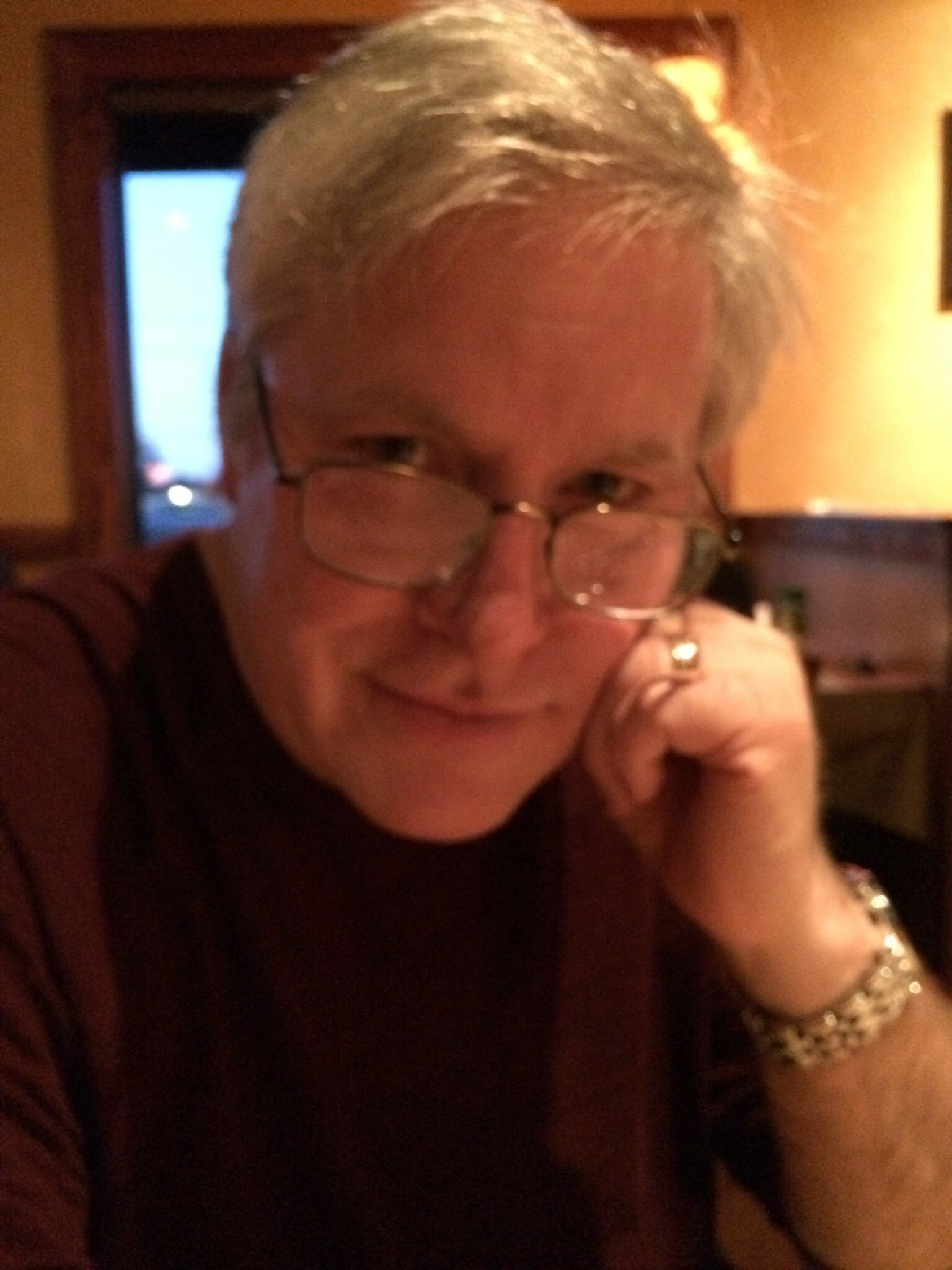
Senior Writer at GeekVibesNation – I am a 50 something child of the 70’s who admits to being a Star Trek/Star Wars/Comic Book junkie who once dove head first over a cliff (Ok, it was a small hill) to try to rescue his Fantastic Four comic from a watery grave. I am married to a lovely woman who is as crazy as I am and the proud parent of a 18 year old boy with autism. My wife and son are my real heroes.


